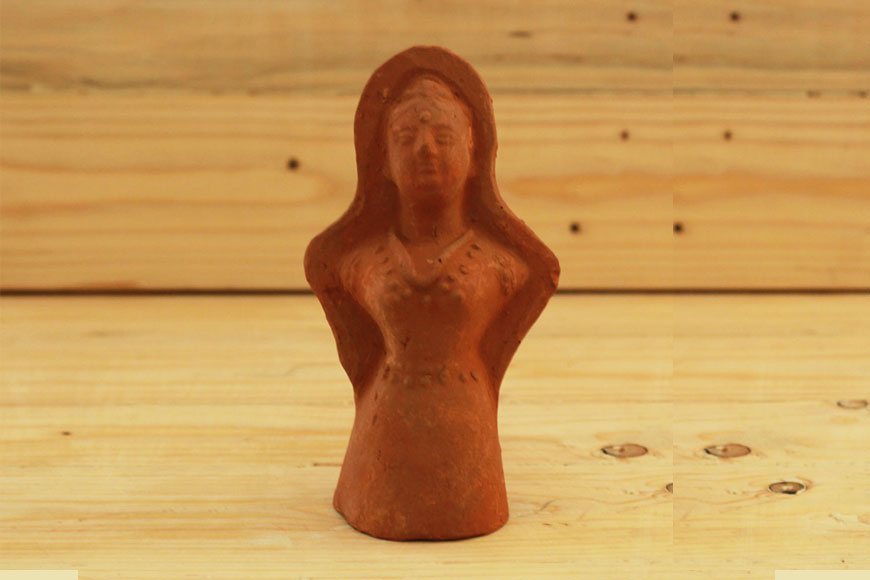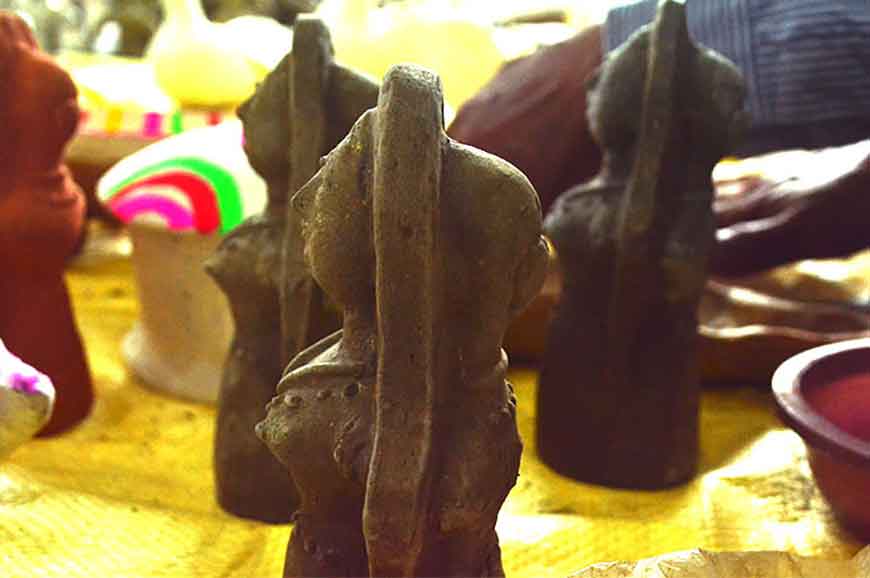Rani Putul of Bengal was made to praise Queen Victoria of England!

Pottery has always been an integral part of Bengal. Beginning from the Chalcolithic period (the Chalcolithic period refers to that part of Old World prehistory wedged between the first farming societies called Neolithic, and the urban and literate societies of the Bronze Age) down to the Mughal Period, archaeological evidences have been unearthed to point to the existence of a rich craftsmanship in this region.
For centuries, rural potters of Bengal, the Kumbhakar community, has been fulfilling domestic and religious requirements. These artisans have been creating utensils and other utility items for domestic use, ceremonial pottery, tiles, dolls and toys with their bare hands or using the potter’s wheel or moulds. Dolls have been customarily crafted by women from the potter communities. Clay dolls of Bengal have great variety and they are made of both soft clay and fired-clay. The dolls are not only crafted differently according to the region of their origin, but they have distinct identities as well.
Howrah, the twin sister of Kolkata, lies on the western side of the Hooghly River. An ancient city, it was the industrial hub of Kolkata and was nick-named ‘Manchester of India’ during colonial rule. The indigenous Queen Doll or Rani Putul hails from this district. The shape of the queen dolls resemble the Shoshthi Putul, used in ritual related to Goddess Shoshthi’s worship but the similarities end there. These dolls are made in many areas in Howrah including South Patil, Narendrapur and Jagatballavpur, where locals refer to these dolls as Rani Putul (Queen doll). The artisans make these shapes in a two-faced mould and fire them. The dolls are then coloured with either red or magenta paint with mica.

The look of the doll is very distinct and its profile has striking resemblance with realistic female face. But the potters who make these dolls have no clue as to why they stick to this form but insist they follow their ancestors when molding these dolls. The queen doll is not a figment of imagination, say the potters who make them. They are, sanguine that the dolls are made in the mould of an actual queen who existed in the annals of history as they were told by their forefathers. The dolls have a majestic appeal and look very real, almost as if a human being has transformed into a doll. The royal attire of the dolls makes them look like real life sophisticated queens. These dolls do not have legs and are clad in a ghaghra (long skirts). The curls on the head are crowned at times.
Previously, these dolls were made by various artisans of Howrah. Today, Dibapakar Pal’s family is the only one who is still holding on to the legacy of his forefathers and making these queen dolls. These dolls are mostly sold at various local fairs.
Researchers working on the origin of dolls have unanimously agreed that the shape of the queen dolls resemble a western figurine. The profile is also not indigenous. It looks rounded and quite full. To search for the actual queen on whom these dolls are molded, we need to time travel to more than a century ago to the royal court of Britain, when the country was being reigned by Queen Victoria. Her love and attachment for India is fairly well-known. She looked at Indians favourably and asked her British officials to be sympathetic towards her Indian subjects. She abolished the tyrannical rule of the East India Company and took over as the Queen of India in 1876. Indians welcomed her reign and bestowed her with the title of Kaiser-e-Hind. Even Rabindranath Tagore was elated and welcomed the Queen’s rule as a blessing for Indians.
Raja Sourendramohan Tagore of Pathuriaghata wrote a series of songs, Victoria Geetimala, praising the queen. The rural society of Bengal was also touched by this new enthusiasm shown towards the Queen by the urban society. It reflected in their daily lives and in their creations. The potuas (scroll painters) of Kalighat delineated women in their typical style but took the liberty to put a crown on the head of the female figure, that was identical to the one that Queen Victoria wore. The potters of Howrah district, too, created the Queen dolls that resembled Queen Victoria of England. The profile of the dolls resemble Queen Victoria’s rounded face. Her long gown and hairdo too, were carefully replicated in the dolls and they were lovingly christened Rani putul or Queen doll.









